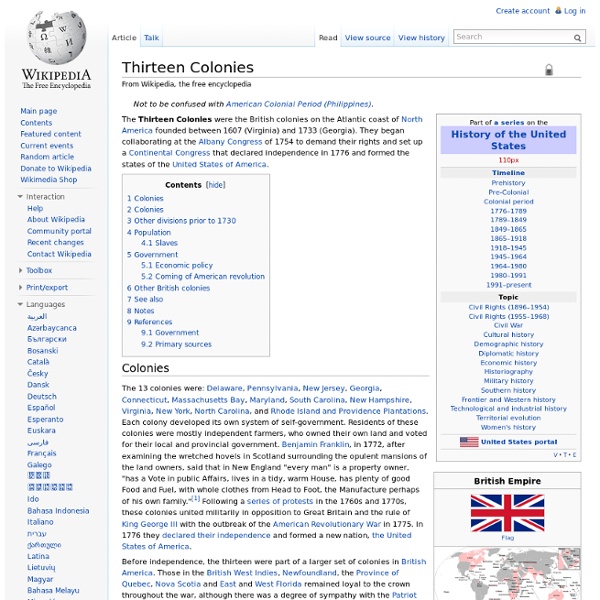British Overseas Territories
The name "British Overseas Territory" was introduced by the British Overseas Territories Act 2002, replacing the name British Dependent Territory introduced by the British Nationality Act 1981. Prior to 1 January 1983, the territories were officially referred to as Crown colonies. With the exceptions of the British Antarctic Territory and South Georgia and the South Sandwich Islands (which host only officials and research station staff) and the British Indian Ocean Territory (used as a military base), the Territories retain permanent civilian populations. Collectively, the Territories encompass a population of approximately 350,000 people and a land area of approximately 667,018 square miles (1,727,570 km2). The current minister responsible for the Territories is Mark Simmonds MP, of the Foreign Office. Current overseas territories[edit] The fourteen British overseas territories are:[11] History[edit] St. Many of the overseas territories are in the Caribbean, as shown on the map.
British Empire - The Story
The Empire’s first magnificent era dawned with the exploits of Elizabeth 1st’s daredevil explorers. These men charted the icy wastes of the arctic, braved Indian deserts on foot and voyaged south to hurl their challenges in to the face of Spain. Spain still claimed half the world as her own God-given right, but it trembled in the face of a tubby red-faced Cornishman by the name of Francis Drake whom, the Spaniards called “El Draque”. ‘The Dragon’. Towering ambition and greed has its evil sides, see how the traders of the East India Company, dazzled by the wealth of the Mughal empire, made fortunes out of the vulnerable and simple Indians. Read one of history’s grizzliest episodes of how sea captains, crammed the fetid airless holds of their ships with African slaves for sale across the Atlantic. Trace Britain’s great power struggles with France, which reverberated across the world. Elsewhere, Britain expanded voraciously. Map of the British Empire 1897 (Green) Custom Search
The British Empire
British Empire
During the Age of Discovery in the 15th and 16th centuries, Portugal and Spain pioneered European exploration of the globe, and in the process established large overseas empires. Envious of the great wealth these empires generated, England, France, and the Netherlands began to establish colonies and trade networks of their own in the Americas and Asia.[5] A series of wars in the 17th and 18th centuries with the Netherlands and France left England (and then, following union between England and Scotland in 1707, Great Britain) the dominant colonial power in North America and India. The independence of the Thirteen Colonies in North America in 1783 after the American War of Independence caused Britain to lose some of its oldest and most populous colonies. British attention soon turned towards Asia, Africa, and the Pacific. Following the defeat of Napoleonic France in 1815, Britain enjoyed a century of almost unchallenged dominance and expanded its imperial holdings across the globe.
Commonwealth of Nations
The Commonwealth of Nations, commonly known as the Commonwealth (also, the British Commonwealth),[1] is an intergovernmental organisation of 53 member states[2] that were mostly territories of the former British Empire. The Commonwealth operates by intergovernmental consensus of the member states, organised through the Commonwealth Secretariat, and non-governmental organisations, organised through the Commonwealth Foundation.[3] The Commonwealth dates back to the mid 20th century with the decolonization of the British Empire through increased self-governance of its territories. It was formally constituted by the London Declaration in 1949, which established the member states as "free and equal".[4] The symbol of this free association is Queen Elizabeth II who is the Head of the Commonwealth. The Queen is also the monarch of 16 members of the Commonwealth, known as Commonwealth realms. Member states have no legal obligation one to another. History[edit] Origin[edit] Dominions[edit]
English colonial empire
English overseas possessions in 1700 The English overseas possessions comprised a variety of overseas territories that were colonized, conquered, or otherwise acquired by the former Kingdom of England during the centuries before the Acts of Union between England and the Kingdom of Scotland. In 1707 these created the Kingdom of Great Britain, when the many English possessions became the foundation of the British Empire. In North America, Newfoundland and Virginia were the first centres of English colonization. As the 17th century wore on, Maine, Plymouth, New Hampshire, Salem, Massachusetts Bay, New Scotland, Connecticut, New Haven, Maryland, and Rhode Island and Providence were settled. Origins[edit] The Kingdom of England is generally dated to the rule of Æthelstan from 927.[1] During the rule of the House of Knýtlinga, from 1013-1014 and 1016-1042, England was part of a personal union that included domains in Scandinavia. Other early English expansion occurred within the British Isles.



